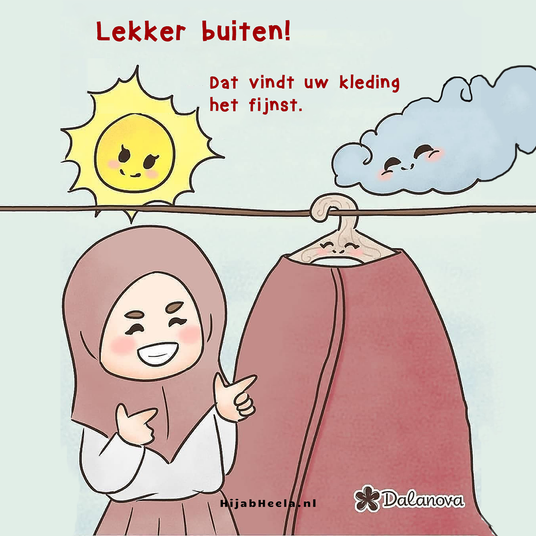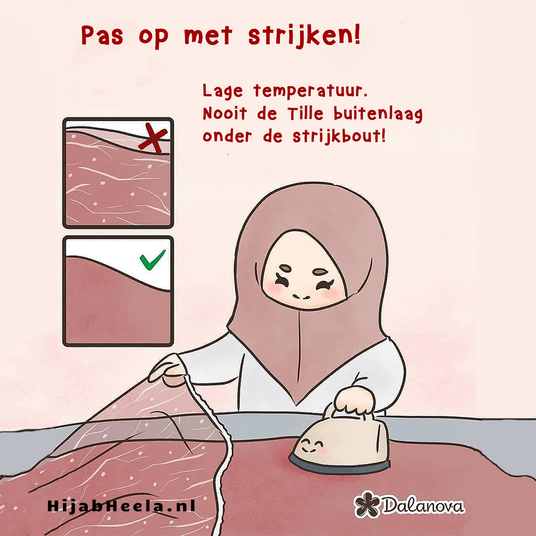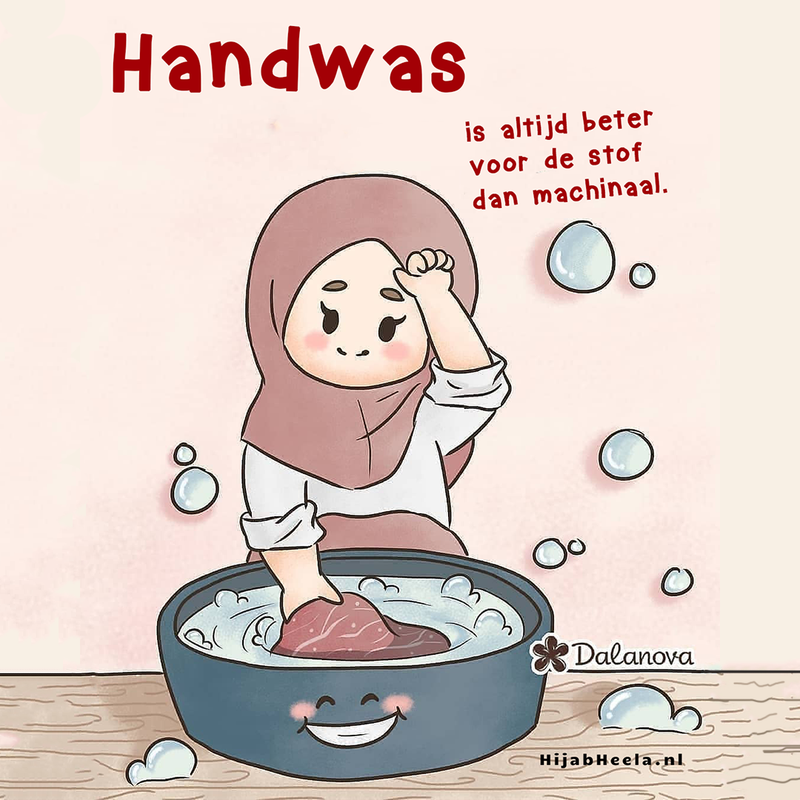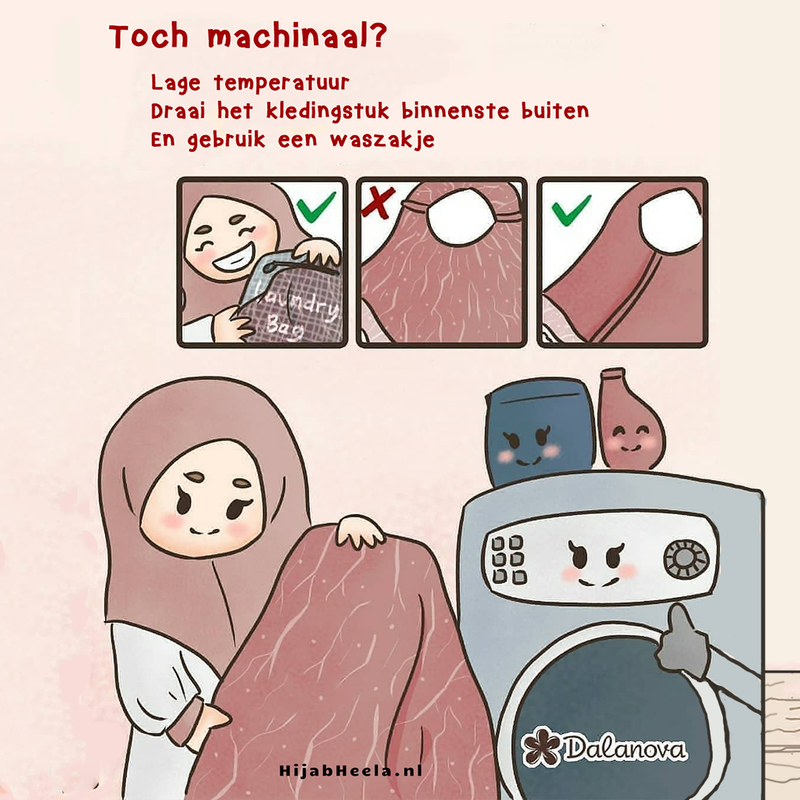
Essential washing tips!
We use quite a lot of different types of fabrics for our products and you can't treat them all the same.
Because our clothes are bought in Indonesia, there are often no labels with the washing instructions because washing is usually done by hand there.
Unfortunately, it sometimes happens that there are ladies who have treated their new clothing incorrectly, so that the fabric is no longer completely beautiful.
So I thought to avoid disappointment I will try to clarify things by the will of Allah!
I would also like to point out that damage due to improper handling of the clothing is not covered by the warranty.
Cotton
Cotton
Most of the fabrics we use are cotton.
The advice applies to these fabrics that they are not too hot. Simply at 30 degrees and turn the clothes inside out, this keeps the colors fresh for the longest time and prevents damage to the outside caused by the washing machine.
Poly-Cotton
Poly-Cotton
You actually wash poly-cotton in the same way as cotton fabrics, but it is certainly important to wash them only at a low temperature. To prevent shrinkage of the garment
Jersey
Jersey
The Jersey clothes.
Hand washing is always best and safest for these fabrics.
If you do put them in the machine, put it on the "hand wash program" and turn the garment inside out, make sure the water temperature is low and the spin cycle is also on a low setting.
Denim fabric
Denim fabric
We also have some models of Denim fabric.
These fabrics require a colder washing temperature and try not to wash them too often. Make sure the zippers and buttons are closed to prevent deformation of the fabric. Put the washing machine on a "delicate program" And turn this fabric inside out! This prevents the colors from fading and helps to reduce extra wear marks.
Media grid

Don't have room to hang out the laundry?
Then watch out with all fabrics that contain plastic. Like everything made of Jersey, but also the different types of poly-cotton.
There is a chance that the stretch will go out, so it is better to drape it in a well-ventilated place in the house, try to keep the natural shape of the dress.
But also try to keep the drying temperature low with the sturdier fabrics such as cotton and denim.

But what about ironing now?
Well, we'll talk about that in the next chapter! Ironing is never really recommended for your clothes anyway, if possible use a clothes steamer or use the steam setting of your iron.
Frequently Asked Questions
Ironing of:
Cotton
Cotton
It is easier to get cotton wrinkle-free if the clothing is still a little damp. Always turn the garment inside out to prevent damage to the outer layer. Set the iron to the lowest cotton setting to start with and try to increase the temperature gradually if the wrinkles still remain. It can help to wet the worst creases with a spray.
Poly-Cotton
Poly-Cotton
Be careful when ironing these fabrics. The most common fabric consists of about 65% polyester and 35% cotton. These fabrics absolutely cannot withstand high temperatures. So always use a low setting to make this fabric wrinkle free.
So how do you iron them?
Here's a little explanation of how best to iron them.
Always use an ironing board and a press cloth. A press cloth is a piece of fabric that you put between the iron and the garment to prevent damage from the heat of the iron, you could also use a damp cotton tea towel. Place the garment on the ironing board and place the press cloth over it. Because the freedom of movement is limited, you cannot always slide back and forth, it is easiest to always lift the iron and lower it on the creases. You "press" the garment into shape in this way. Always avoid leaving the iron in one place for extended periods of time. If you can't get rid of the wrinkles, increase the temperature slightly or spray the fabric with a little water.
Denim
Denim
If you like to iron your denim, here are some tips for you. Make sure the iron is set to a low temperature and fill the iron with enough water to keep the garment moist during ironing. Pull the pockets out to prevent creasing and do not iron the zipper print back into the fabric. Turn the garment inside out to prevent fading and iron along the natural seam of the garment.
Jersey
Jersey
What are the advantages of jersey?
Jersey is elastic due to the knitting technique. This also ensures that the fabric is comfortable because it stretches. By adding elastane or another synthetic substance, manufacturers make the fabric even more elastic and stronger. Unlike other knitted fabrics, jersey doesn't fall apart as quickly when you cut it. This is because one long thread is used.
Because the fabric is knitted, the fabric creases much less and clothing made of jersey fabric requires little or no ironing. If you do need to iron them, iron on the inside of the fabric at medium heat and use steam if necessary.












